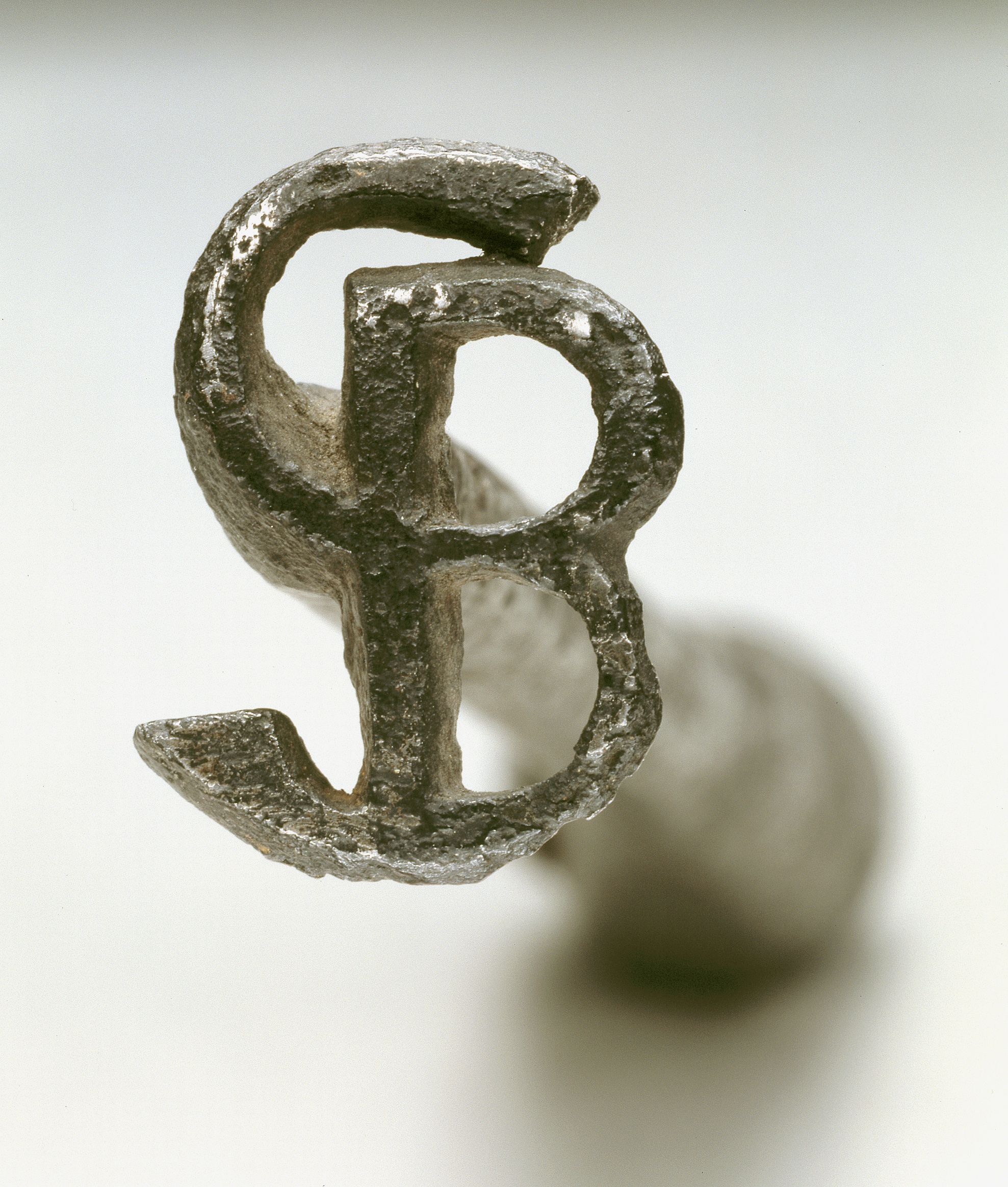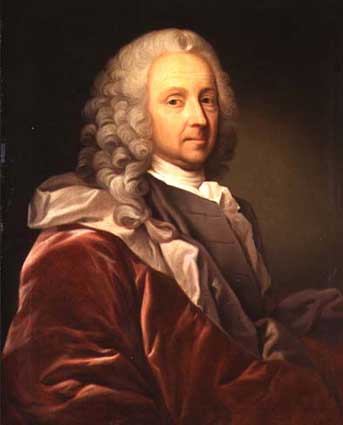|
Steen Ottesen Brahe (1547–1620)
Steen Ottesen Brahe (21 December 1547 – 11 April 1620) was a Danish privy counsellor and landowner. Early life and education Brahe was born on 21 December 1547 at Gladsaxehus in Scania, the son of Otte Thygesen Brahe of Knudstrup (1518–1571) and Beate Clausdatter Bille (1526–1605), He was the younger brother of Tycho Brahe. He went to school in Aarhus and Aalborg and was then trained in court life in Jensen Rosensparr'e household. He then visited count Günther of Schwarzburg and later followed him to Denmark and Hungary. Marriage of Anne of Denmark and James VI of Scotland In 1589 he was appointed Master of Household or Chamberlain to Anne of Denmark, who was betrothed to James VI of Scotland. Brahe and the queen's servants set sail with the Admiral of the Realm, Admiral Peder Munk for Scotland. The wind drove them to stay on the coast of Norway. James VI joined them at Oslo. On 15 December 1589 James VI decided to reward Brahe and Axel Gyldenstierne for their good service ... [...More Info...] [...Related Items...] OR: [Wikipedia] [Google] [Baidu] |
Gladsaxehus
Gladsaxehus ( sv, Gladsax hus; earlier Gladsaxehus, also Glathsax or Glatzsax) is a ruined castle in Gladsax parish, in the Simrishamn Municipality of Skåne in south-eastern Sweden. The ruins lie immediately to the east of the church and cemetery of Gladsax. History The first written mention of the property is a charter issued in 1322 by Archbishop Esger Juul affirming the ruling by Archbishop Eskil in the 12th century that four churches were subordinate to the monastery at Tommarp, amongst which was "ecclesiam sancti Jacobi in Glathsyas".Lars JönssonGladsaxehus - en medeltida länsborg Gladsax By In her will dated 11 August 1398, Ide Pedersdatter Falk, widow of Torkil Nielsen Bing, bequeathed her manor at Gladsax, together with a large fortune in property and cash, to be the endowment and seat of a planned Dominican nunnery. She appointed her personal friend, Queen Margaret, to be her executor. However, after Ide Falk's death in 1399, the queen and Bishop Peder of Roskild ... [...More Info...] [...Related Items...] OR: [Wikipedia] [Google] [Baidu] |
Annie Cameron
Annie Isabella Cameron (1897-1973) was a Scottish historian. Biography She was the daughter of Mary Sinclair, and James Cameron, a Glasgow engineer. She studied history at the University of Glasgow and the University of St Andrews. She wrote a doctoral thesis on Bishop Kennedy of St Andrews. She worked at the Scottish Record Office and in 1938 married George Dunlop, proprietor of the '' Kilmarnock Standard''. She died in 1973. Marcus Merriman, a historian of the Rough Wooing acknowledged Annie Cameron, Marguerite Wood, and Gladys Dickinson for their work publishing 16th-century primary sources. He praised Cameron for her "stunning" edition of the Scottish correspondence of Mary of Guise Mary of Guise (french: Marie de Guise; 22 November 1515 – 11 June 1560), also called Mary of Lorraine, was a French noblewoman of the House of Guise, a cadet branch of the House of Lorraine and one of the most powerful families in France. She ..., "placing in the hands of the researche ... [...More Info...] [...Related Items...] OR: [Wikipedia] [Google] [Baidu] |
16th-century Danish Landowners
The 16th century begins with the Julian year 1501 ( MDI) and ends with either the Julian or the Gregorian year 1600 ( MDC) (depending on the reckoning used; the Gregorian calendar introduced a lapse of 10 days in October 1582). The 16th century is regarded by historians as the century which saw the rise of Western civilization and the Islamic gunpowder empires. The Renaissance in Italy and Europe saw the emergence of important artists, authors and scientists, and led to the foundation of important subjects which include accounting and political science. Copernicus proposed the heliocentric universe, which was met with strong resistance, and Tycho Brahe refuted the theory of celestial spheres through observational measurement of the 1572 appearance of a Milky Way supernova. These events directly challenged the long-held notion of an immutable universe supported by Ptolemy and Aristotle, and led to major revolutions in astronomy and science. Galileo Galilei became a champion of ... [...More Info...] [...Related Items...] OR: [Wikipedia] [Google] [Baidu] |
Otte Steensen Brahe
Otte Steensen Brahe (12 April 1578 – 5 July 1651), also known as Otto Brahe, was a Danish landowner and money lender. He owned Næsbyholm, Bavelse and Tersløsegaard on Zealand. Early life and education Otto Brahe was born on 12 April 1578 at Næsbyholm, the son of privy counsellor Steen Brahe (1547–1620) and Birgitte Rosenkrantz (1555–88). He attended Sorø Academy from 1587 and later continued his education in Aarhus. In 1593–99, Brahe and Kurt Aslaksen went on a grand tour in Europe, studying at the universities in Rostock (1593), Herborn (from spring of 1594), Heidelberg, Basel, Geneve (from 3 December 1597) and Orleans (1599). He also visited England and Scotland. In 1600–02, he was a courtier at Frederick V of the Palatinate. Military service In the Kalmar War, Brahe served a cornet in the heavy cavalry. He lost an arm in the Battle of Kalmar. Property Brahe inherited the estates Næsbyholm and Tersløsegaard after his parents. His holdings were in 1638 valued ... [...More Info...] [...Related Items...] OR: [Wikipedia] [Google] [Baidu] |
Steen Brahe Til Knudstrup & Sophie Rostrup Jørgensdatter 1610 , a surname and given name
{{disambiguation, geo ...
The Dutch word Steen means "stone", and is used for "castle" or "fortress", as in the Gravensteen in Ghent, Belgium. It is also an alternative spelling of the Swedish and Danish word ''sten'' with the same meaning. It may refer to: *Steen (given name) *Steen (surname) *Steen, Minnesota, a small city in the United States *Steen (motorcycle), an American motorcycle company that produced motorcycles in the 1970s. *Steen Township, Knox County, Indiana, United States * Het Steen, a castle in Belgium * Chenin blanc, a white wine commonly called "Steen" in South Africa See also *Stein (other) *Stine Stine is a surname. Notable persons with that name include: *Brad Stine (born 1960), American comedian and author *Brad Stine (tennis coach) (born 1958), American tennis coach *Charles Stine (1882–1954), American chemist *Charles J. Stine (1864� ... [...More Info...] [...Related Items...] OR: [Wikipedia] [Google] [Baidu] |
Birgitte Rosenkrantz Ottesdatter
Birgitta is the Swedish and Icelandic form of the Irish Gaelic female name ''Brighid''. Brighid or Brigid was the name of an ancient Celtic goddess, and its English form is Bridget. Birgitta and its alternate forms Birgit and Britta became common names in Scandinavia because of St. Bridget of Sweden.Hanks, P. & Hodges, F. (1990). A dictionary of first names. Oxford University Press. People named Birgitta *Bridget of Sweden (c. 1303 – 23 July 1373), Swedish Roman Catholic saint *Princess Birgitta of Sweden (born 1937), elder sister of King Carl XVI Gustaf *Birgitta Durell (1619-1683), Swedish industrialist *Birgitta Jónsdóttir (born 1967), Icelandic politician *Birgithe Kühle (1762-1832), Dano-Norwegian editor *Birgitta Moran Farmer (1881-1939), American miniature painter *Birgitta Haukdal (born 1979), Icelandic singer *Birgitte Winther (1751-1809), Danish opera singer *Birgitta Hillingsø (born 1940), Danish antiques dealer and godmother of Crown Prince Frederik of Denmark Re ... [...More Info...] [...Related Items...] OR: [Wikipedia] [Google] [Baidu] |
Hvedholm Castle
Hvedholm Castle is an estate and castle located near Faaborg on the island of Funen, Denmark. It is now the site of Hvedholm Slotshotel. History Hvedholm was built in the 15th century. The main building was built in 1588, rebuilt in 1681 after a fire and was rebuilt in 1878–1882 on the basis of drawings by architect Johan Schrøder (1836-1914). It was owned in turn by the Banke, Hardenberg and Brahe families until 1919, when the Danish government presented the then owners with an enormous tax demand, forcing them to sell it to the state for approximately 175,000 Danish kroner. Hvedholm Castle was later returned to the Brahe family, who were considered for generations the rightful rulers of the castle and surrounding villages. The family was served by the nearby Horne Church Horne Church ( da, Horne Kirke) was established in the Late Middle Ages on the southwest part of the island of Funen, Denmark. This church, founded as a Catholic place of worship, is situated in the v ... [...More Info...] [...Related Items...] OR: [Wikipedia] [Google] [Baidu] |
Tersløsegaard
Tersløsegaard is a manor house located close to Dianalund, Sorø Municipality some 60 kilometres southwest of Copenhagen, Denmark. It was owned by Ludvig Holberg from 1745 to 1756. He left it to Sorø Academy and it has now been converted into a self-owning foundation and contains a Holberg exhibition. The main building was listed on the Danish registry of protected buildings and places by the Danish Heritage Agency on in 1918. History Early history Tersløsegaard traces its history back to the 13th century. The first known owner was Anders Knudsen Grosøn. He was married to Esbern Snare's daughter. It was acquired by Jens Grubbe in 1305 and was then owned by his descendants for more than a hundred years. The last member of the Grubbe family to own Tersløsegaard was Niels Grubbe. He had no sons and the estate was therefore passed on to his son-in-law Anders Jensen Passow. Members of the Passow family owned Tersløsegaard with few interruptions until the beginning of the 16th cen ... [...More Info...] [...Related Items...] OR: [Wikipedia] [Google] [Baidu] |
Bregentved
Bregentved is a manor house located 3 km east of Haslev on the Danish island of Zealand. It has been owned by the Moltke family since the middle of the 18th century. History Early history The first known reference to Bregentved is from 1319 when King Eric VI of Denmark passed the estate to Roskilde Abbey. From the end of the 14th century the property was owned by a succession of aristocratic families, including that of Krognos in the 16th century, until 1718 when it was acquired by King Frederick IV. In the eighteenth century Bregentved was in consecutive Birks, so had separate legal jurisdiction from Haslev Sogn (parish) and old Ringsted Herred (hundred). The north wing still extant in the early 21st century was built 1731-36 by architect Lauritz de Thurah and has a black-tiled, hipped roof. It contains a chapel on the first floor. Moltke era In 1746, King Frederick V granted the Bregentved estate to Adam Gottlob Moltke, one of his closest companions who was at the s ... [...More Info...] [...Related Items...] OR: [Wikipedia] [Google] [Baidu] |
Sorø
Sorø () is a town in Sorø municipality in Region Sjælland on the island of Zealand (''Sjælland'') in east Denmark. The population is 7,999 (2022).BY3: Population 1. January by rural and urban areas, area and population density The Mobile Statbank from The municipal council and the regional council are located in Sorø. Sorø was founded in 1161 by , later the founder of |
Næsbyholm
Næsbyholm is a manor house and estate located east of Tybjerg Lake, between Sorø and Glumsø, in Næstved Municipality, some southwest of Copenhagen, Denmark. Since 1610, Næsbyholm and Bavelse have had the same owners. The three-winged Dutch Renaissance-style main building was reconstructed after fires in 1932 and 1947, incorporating elements from 1585. It is now used as a venue for weddings, conferences and other events. The scenic park was laid out in the 18th century. The Næsbyholm-Bavelse estate covers of land (2012), of which approximately half is forest. History Early history In the Middle Ages, Næsbyholm was an ordinary farm owned by Anders Olufsen. It was granted status of a manor at some point during the reign of Margrethe I (1353–1412) after Olufsen had acquired more land in the area from the Diocese of Roskilde in exchange of property elsewhere. In the 15th and early 16th century, the owners of Næsbyholm were in conflict with the Crown several times. In 1509, ... [...More Info...] [...Related Items...] OR: [Wikipedia] [Google] [Baidu] |



